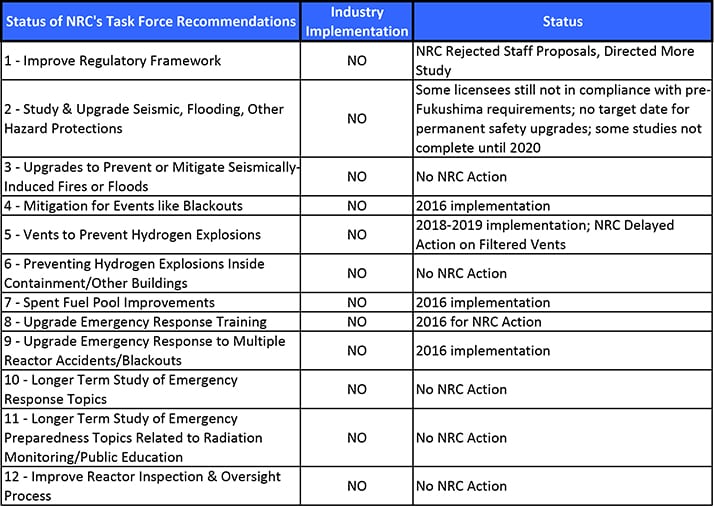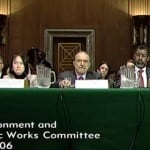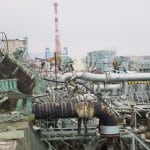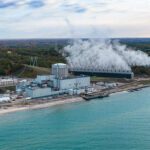The chairman and ranking member of the U.S. Senate Committee on Environment and Public Works (EPW) presented conflicting progress reports on the status of Fukushima task force recommendations during a committee oversight hearing held on April 15.
“You haven’t done really anything since Fukushima, as far as I can tell,” said Sen. Barbara Boxer (D-Calif.), ranking member of the EPW, as she addressed the four Nuclear Regulatory Commission (NRC) commissioners testifying at the hearing.
“We don’t really see any of the recommendations that came out being completely taken care of,” Boxer said as she referenced a chart (Table 1) identifying 12 taskforce recommendations that she claimed were not fully implemented.
 |
| Table 1. According to Sen. Boxer, little progress has been made on task force recommendations. Source: Sen. Barbara Boxer (D-Calif.) |
EPW Chairman Sen. Jim Inhofe (R-Okla.) recollected that there had been 35 recommendations, but Boxer countered “Well, here are the ones—12 that I’m talking about—maybe there were 35, but the top 12 here, no, no, no, no, no, no, no, no, no. Nothing’s been done.”
NRC Chairman Stephen G. Burns responded to Boxer’s allegations by detailing some items that had been accomplished and offering some other items that are planned for completion in the next couple of years.
“The NRC expects that most licensees will complete implementation on a majority of the most safety significant enhancements by or before 2016,” Burns said. “These include safety enhancements in the following areas: mitigation strategy, spent fuel pool instrumentation, flooding and seismic re-evaluations and interim actions, and enhancements to emergency preparedness communications and staffing.”
He noted that some plants completed implementation of the Fukushima mitigation strategies order in 2014. More than half are scheduled to do so this year and the rest are expected to finish in 2016, with a few exceptions.
Last year also saw the completion of two new national response centers, one in Phoenix, Ariz., and the other in Memphis, Tenn. The centers—stocked with multiple sets of emergency diesel generators, pumps, hoses, and other backup equipment—are designed to supply emergency equipment to any U.S. nuclear plant within 24 hours.
“The notion that the NRC has done nothing in response to Fukushima just isn’t true,” Sen. Inhofe said. “I understand the industry expects to spend approximately $4 billion on post-Fukushima safety requirements, so clearly we’ve been very busy.”
—Aaron Larson, associate editor (@AaronL_Power, @POWERmagazine)










